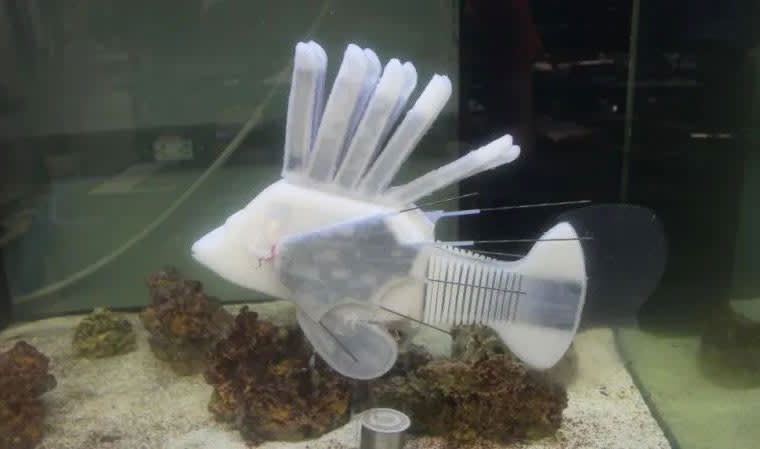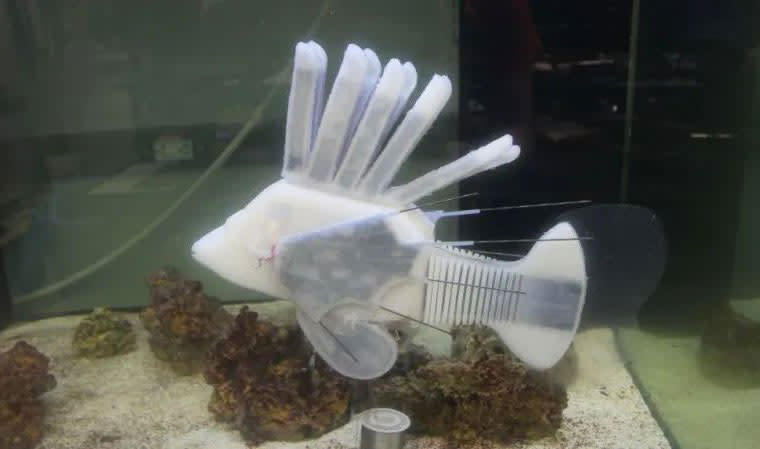Scientists make a lifelike robotic fish using multipurpose 'blood'
The synthetic blood acts as propulsion fluid and an energy store.
There's no question that robots have come a long way since their cold, clunky, cumbersome inception. Nowadays they're smart, agile and responsive -- but they're still missing the tactile, multipurpose elements that make living creatures flexible and autonomous. Until now. In a bid to make robots more lifelike, scientists have created a soft robotic lionfish and have pumped it full of life-giving "blood."
While typical robots carry bulky single-purpose parts to provide power, such as a battery or gears, the newly-developed lionfish has a unique circulatory system that provides both power and propulsion. The "blood" pumped around the system comprises an electrolyte solution that acts as both hydraulic fluid and energy storage. The result? A more lifelike looking creature that was able to swim for long durations of up to 36 hours -- eight times longer than a robot of similar design but without the synthetic blood.
The researchers -- a team composed of scientists from Cornell University and the University of Pennsylvania -- say that nothing like this has been done before: it's the first experiment to combine hydraulic force transmission, actuation and energy storage in a single multipurpose system. While the development will undoubtedly be used to add increasing functionality to soft robots, the researchers say it could have applications in all machines requiring fluid. For example, this "smart blood" could boost the power of electric vehicles and airplanes. In any case, it certainly takes us one step closer to truly lifelike robots, and all the challenges and opportunities those will bring.


